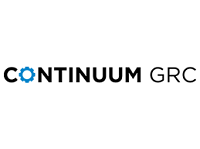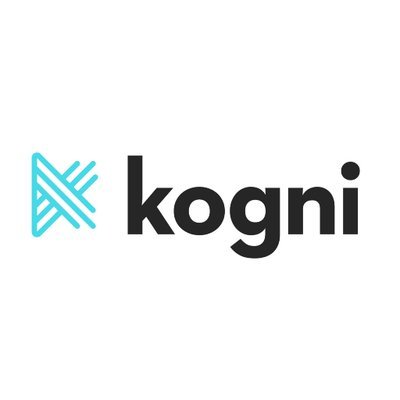What Is Risk Management Software?
Risk management software enables firms to discover, assess, and minimize potential risks to their operations, assets, and bottom line. This type of software employs powerful algorithms and data analysis to assist firms in managing risk, making better decisions, and improving overall business performance. At its core, risk management software aims to centralize and streamline the risk management process.
It enables firms to manage and monitor hazards in real time, resulting in fast and effective solutions when needed. Automating time-consuming operations like data gathering and analysis simplifies complex risk management procedures and allows businesses to focus on strategic planning and risk control. Risk management software also offers businesses with a comprehensive perspective of their risks via visualizations and reports, making it easier to recognize patterns and trends that may lead to severe hazards.
This not only aids in threat prevention, but also in risk forecasting and scenario preparation. Furthermore, risk management software frequently includes compliance and governance tools, which ensure that businesses follow industry norms and best practices. This is especially important for organizations in highly regulated sectors such as healthcare, finance, and energy. Overall, investing in risk management software can lead to substantial cost savings, increased operational efficiency, and a more secure and resilient firm. It is an essential tool for businesses of all sizes seeking to proactively manage risk and create long-term growth.
What Are The Recent Trends In Risk Management Software?
Risk management software has become an indispensable tool for businesses of all sizes and industries. With global uncertainties and ever-changing regulations, having a thorough risk management strategy is critical for the success of any firm. As a result, the demand for dependable risk management software has risen, resulting in a boom in the creation of new and innovative solutions.
Buyers should be aware of the following recent trends in risk management software before making a purchase:
1. Integration With Artificial Intelligence (AI): One of the most important trends in risk management software is the integration of AI. AI technology can scan large amounts of data and uncover patterns that people may overlook, resulting in more accurate risk assessment and predictive analysis. This tool can help businesses stay ahead of potential dangers and make more informed decisions.
2. Cloud-Based Solutions: Cloud-based risk management software is gaining popularity due to its simplicity, cost-effectiveness, and scalability. This solution allows users to access software from anywhere with an internet connection, making it ideal for remote teams and distributed companies. Furthermore, the cloud provides improved security safeguards to ensure sensitive data is secured.
3. Emphasis On Compliance And Governance: As regulatory requirements grow, risk management software adapts to meet them. Many solutions now include functionality tailored to compliance and governance, such as tracking regulatory changes, automating reporting processes, and preserving compliance paperwork.
4. Real-Time Monitoring And Warnings: With the rise of cyber risks, businesses are searching for risk management software that offers real-time monitoring and warnings. This feature allows users to detect and respond to potential dangers quickly. It may also incorporate automatic incident response, which allows for prompt action to mitigate the impact of a risk.
5. User-Friendly Interface: Historically, risk management software was typically complex and difficult to browse, necessitating substantial training to operate efficiently. However, modern solutions increasingly offer user-friendly interfaces, making it easier for non-technical users to operate and maximize the software's capabilities. This trend has made risk management software more available to a broader variety of enterprises.
Benefits Of Using Risk Management Software
Introduction: Risk management is an important part of every business. It entails detecting, assessing, and managing any risks that may affect the organization's operations, finances, and overall success. Traditional manual risk management strategies are no longer sufficient in today's increasingly complicated and unpredictable business context. This is where risk management software comes in.
Let's explore, we'll go over the advantages of utilizing risk management software and why it's an essential investment for every firm. Advantages of Using Risk Management Software:
1. Centralized Risk Management: One of the primary advantages of risk management software is that it provides a one platform for managing all types of hazards. It enables you to combine data from many departments, processes, and systems, resulting in a holistic view of your organization's possible threats. With this knowledge, you may make informed decisions and take proactive steps to reduce hazards before they become serious difficulties.
2. Streamlined Risk Assessment: Risk assessment is a critical component of risk management. This procedure can be streamlined using risk management software's standardized templates, checklists, and workflows. This guarantees that all risks are assessed consistently and on a timely basis. It also improves communication across teams, allowing them to identify and prioritize potential hazards.
3. Customizable Risk Categories: Each firm faces distinct risks based on its industry, operations, and objectives. Risk management software allows you to establish configurable risk categories that are tailored to your individual needs. This enables a more personalized approach to risk management, making it more successful in identifying and mitigating possible hazards to your company.
4. Automated Risk Monitoring: Manual risk assessment can be time-consuming and tiresome. This procedure can be automated using risk management software, which allows you to continuously monitor hazards and receive real-time notifications when they surpass a specified level. This saves time and resources, making your risk management approach more effective.
5. Increased Compliance: In today's corporate environment, complying with regulatory regulations is critical. Noncompliance with rules and regulations may result in financial penalties, reputational loss, and even legal action. Risk management software can help you maintain compliance by providing capabilities for regulatory reporting and audits.
6. Better Decision Making: Risk management software helps to make better decisions by offering a comprehensive perspective of all potential hazards. It lets you to prioritize risks based on their severity and likelihood, which helps you manage resources and take necessary decisions. Furthermore, with the ability to conduct "what-if" scenarios, you may evaluate the impact of various options on potential risks and make informed decisions to reduce losses.
Important Factors To Consider While Purchasing Risk Management Software?
When looking to acquire risk management software, buyers should examine many critical elements to ensure that it is the greatest fit for their business.
Here are some crucial items to consider during the purchasing process:
1. Determine Your Specific Demands: Before entering the market, you should first identify your organization's specific risk management objectives and goals. What are the primary risks you want to mitigate? What features and functionalities are critical to your business? This will help you limit down your alternatives and find software that meets your needs.
2. User-Friendly Interface: A decent risk management software should have a simple interface that is easy to understand and utilize. This ensures that your team can easily adjust to and efficiently use the new system. A complex software with a steep learning curve will only impede productivity and acceptance.
3. Customization Options: Because each organization has different risk management needs, it's critical to select software that can be tailored to your individual requirements. Look for software that enables you to customize risk assessments, reporting, and workflows to match your company's operations and standards.
4. Integration Capabilities: Your firm is likely to currently use a variety of tools and systems, therefore it is critical to select risk management software that connects with your existing software. This will streamline procedures and prevent data duplication and errors.
5. Scalability: As your organization grows, your risk management requirements may vary. Choose software that can expand and adapt to your firm without incurring major additional costs.
6. Data Security: Because risk management entails dealing with sensitive and secret information, it's critical to select software that prioritizes data protection. To safeguard the security of your data, look for features like authentication, encryption, and regular backups.
7. Customer Help: Reliable customer support is essential when dealing with technical issues or software questions. Look for a vendor who provides 24/7 help and has a solid reputation for customer service.
8. User Reviews And Ratings: Read the reviews and ratings left by other software users. This will provide you with insights into the real-world experiences and satisfaction levels of present clients.
When choosing risk management software for your organization, consider these aspects to make an informed decision. Remember to properly explore your options and select software that best meets your organization's objectives and goals.
What Are The Key Features To Look For In Risk Management Software?
When looking for the best risk management software for your organization, there are a few crucial aspects to look for to guarantee you choose the correct choice.
These features include the following:
1. Customizable Risk Assessments: Risk management software must be able to build and customize risk assessments based on your individual business requirements. This enables you to correctly identify and prioritize potential hazards.
2. Risk Monitoring And Tracking: The software should be able to monitor and track hazards in real-time, giving you a comprehensive picture of your risk profile. This tool enables you to make informed decisions and take proactive steps to reduce potential dangers.
3. Incident Management: Search for software that has an incident management system. This feature allows you to centrally track and manage any incidents that occur in your business, giving you all the information and data you need to assess and enhance your risk management strategy.
4. Compliance Management: In today's highly regulated company environment, compliance is an essential part of risk management. Your risk management software should be able to track and report on key regulatory requirements, ensuring that your firm remains compliant.
5. Automated Workflows: Look for software that includes automated workflows for risk assessments, incident management, and compliance. This functionality automates your risk management operations, saving you time and effort and reducing human mistake.
6. Reporting And Analytics: The program should include full reporting and analytics capabilities. This enables you to obtain insight into your risk management performance, spot trends and patterns, and make data-driven decisions to enhance your risk management strategies.
7. User-Friendly Interface: A user-friendly interface is critical for ensuring that your staff can effortlessly explore and use the product. Look for a system that provides a simple and user-friendly interface with little training necessary.
By taking into account these crucial qualities, you can confidently choose risk management software that suits your individual business requirements and assists you in effectively mitigating potential risks. Remember, investing in a strong risk management solution is critical to your company's long-term success and sustainability.
Why Do Businesses Need Risk Management Software?
Risk management is a critical component of operating a successful organization. It entails detecting, assessing, and minimizing any risks that may affect a company's operations, finances, and reputation. Organizations face an ever-increasing list of hazards as the business landscape becomes more complicated, making effective risk management difficult. Here's where risk management software comes into play.
At its core, risk management software is a tool for businesses to streamline their risk management operations. It offers enterprises a consolidated platform for identifying, assessing, prioritizing, and monitoring possible risks in all areas of their operations. Companies can use risk management software to address possible hazards proactively, lower their likelihood, and mitigate their impact if they do arise.
One of the key reasons that firms use risk management software is to ensure compliance with regulations and industry standards. Compliance is critical for any firm to avoid legal concerns, financial penalties, and reputational damage. Companies that use risk management software may simply track and report on compliance-related actions, ensuring that they comply with all applicable rules.
A strong risk management software also allows firms to make more informed decisions. Organizations may prioritize and deploy resources more effectively with a centralized picture of all potential hazards. This enables them to focus on high-priority risks and take proactive efforts to reduce them, thereby decreasing the total impact on operations. In addition to compliance and decision-making, risk management software can assist firms enhance their risk management procedures.
By automating time-consuming operations like data collecting, processing, and reporting, the software saves firms important time and money. It also gives real-time information and notifications, helping businesses to keep ahead of developing threats and take decisive action. Furthermore, risk management software promotes collaboration and communication inside a business.
It enables smooth communication among many departments and stakeholders, resulting in a more complete and unified approach to risk management. This encourages transparency and responsibility, ensuring that everyone understands how to manage potential risks. Overall, risk management software is an essential investment for any firm that wants to improve its risk management processes.
It not only helps businesses comply with rules and make smarter decisions, but it also enhances internal efficiency, communication, and collaboration. Businesses may protect their operations, money, and reputation over time by detecting potential risks and implementing preemptive measures.
How Much Time Is Required To Implement Risk Management Software?
The implementation time for risk management software varies according to the organization's specific needs and requirements. The software can take anywhere from a few weeks to many months to become completely integrated and functional. The initial setup and installation of the software might take anywhere from a few days to a week, depending on the system's complexity and the amount of data to be transferred.
This includes configuring the software in accordance with the organization's risk management procedures and standards. The next phase is data migration, which involves transferring existing data from spreadsheets or other systems into the new program. This can take several weeks, particularly if there is a large volume of data to be moved. Once the data has been migrated, the software must be thoroughly tested to ensure that it functions properly and satisfies the organization's requirements.
This procedure can take anything from a few weeks to many months, depending on the size of the company and the software's complexity. Additionally, the implementation time is determined by the extent of customization necessary for the software. Customization may take more time, but it is critical to ensure that the software is consistent with the organization's specific risk management policies and procedures. The next phase is to train and onboard personnel so they can utilize the program properly.
This can take many weeks, depending on the size of the company and the software's complexity. It is critical to remember that the implementation time is also dependent on the collaboration and involvement of the organization's personnel, who play an important role in the success of the project. With good preparation and teamwork, the installation process may be shortened, and the software can be seamlessly integrated.
What Is The Level Of Customization Available In Risk Management Software?
When it comes to risk management, each organization faces its own set of risks and requirements. This is why having adaptable risk management software is essential for efficiently managing and minimizing risks. So, what level of customisation should you anticipate from risk management software? First, it's crucial to distinguish between the two forms of customization possible in risk management software: configuration and customisation.
Configuration is the process of changing existing software features and settings to meet your specific business requirements. Customisation, on the other hand, entails creating new features or modifying existing ones to match your specific needs. Most risk management software is highly configurable. This includes the ability to define risk categories, conduct risk assessments, delegate risk ownership, and establish risk tolerances.
Furthermore, you can frequently adjust the amount of access and permission settings for individual users inside your organization. When it comes to customization, the extent of flexibility varies by software. Some risk management software has limited customization capabilities, but others allow you to create your own risk management processes from scratch. Regardless, customization aims to tailor the program to your specific sector, size, and risk profile.
Before deciding on risk management software, you should decide the extent of customization required by your firm. Consider the intricacy of your hazards, industry rules, and your organization's size. Some applications may have more customisation than you require, while others may not have enough. It's critical to strike the correct balance and select software that can be adjusted to your specific requirements.
Which Industries Can Benefit The Most From Risk Management Software?
Risk management software is an essential tool for every business seeking to reduce potential risks and maximize profitability. While this program can be useful in any sector, specific industries will benefit the most from its adoption.
1. Banking Sector: The banking business handles a large volume of data and transactions, making it subject to fraud, data breaches, and compliance difficulties. Financial institutions can use risk management software to swiftly detect and mitigate potential hazards, assuring the security of sensitive data and regulatory compliance.
2. Healthcare: The healthcare industry handles highly confidential patient information. Risk management software can assist in protecting this data against breaches, safeguarding patient privacy, and complying with HIPAA laws. It can also aid healthcare facilities in monitoring and mitigating risks associated with medical errors, malpractice, and supply chain interruptions.
3. Manufacturing: Manufacturing organizations frequently experience supply chain disruptions, product quality issues, and workplace safety concerns. Manufacturers can use risk management software to identify and mitigate potential risks, resulting in less downtime and more overall efficiency.
4. Energy And Utilities: Because the energy and utilities industry is heavily regulated and involves sophisticated operations, it is vulnerable to security breaches and safety problems. Companies can use risk management software to track and manage risks linked to regulatory compliance, environmental impact, and worker safety.
5. Retail And E-commerce: As online shopping becomes more popular, retail and e-commerce organizations confront new risks such as data breaches, supply chain disruptions, and cyber-attacks. Retailers can use risk management software to identify and mitigate these risks, assuring consumer data security and business continuity.
6. Construction: Construction projects have many stakeholders, complicated processes, and significant expenses, making them vulnerable to risks such as delays, budget overruns, and safety issues. Construction organizations can use risk management software to identify potential risks, develop contingency plans, and avoid project delays and losses.
Conclusion
To summarize, investing in a dependable and comprehensive risk management software can considerably benefit any business or organization. The program not only aids in the identification and evaluation of potential hazards, but also provides excellent methods for mitigating and monitoring them. Businesses that employ risk management software can make better decisions, increase operational efficiency, and protect their assets and reputation.
When selecting risk management software, examine its features, interoperability with other systems, usability, and scalability. It is also critical to involve key stakeholders and solicit their feedback to ensure that the software satisfies their unique needs and expectations. Furthermore, completing extensive research and evaluating various software options might assist in determining the greatest fit for your firm.
Reading customer reviews and getting recommendations from reputable sources can also help in decision-making. Finally, investing in high-quality risk management software may protect firms from potential financial and reputational losses while also providing them with a competitive advantage in today's dynamic market. So don't hesitate to choose a reputable risk management software and take the required steps to safeguard your company's future.






















